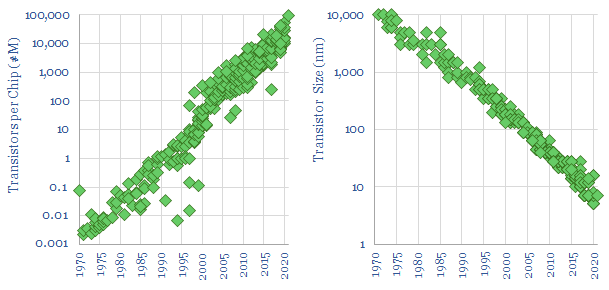Moore’s law entails that computing performance will double every 18-months. It was proposed in 1965. And since then, chips have consistently sustained this pace. We argue such exponential progress has been driven by three positive feedback loops. Can these same feedback loops unlock a similar trajectory for new energies costs? We find mixed evidence in this short, six-page note.
Pages 2-3 explain Moore’s Law for renewables: why it matters for the new energies industry, and why sustained, exponential improvements must hinge upon positive feedback loops.
The first feedback loop is down to the laws of physics, unique to the semiconductor industry, as explained on page 4. It is hard to see how new energy technologies benefit from the same physics.
The second feedback loop is from boot-strapping, as better chips give better computers, which in turn have designed better chips, as outlined on page 5. New energies seem to be doing the opposite of boot-strapping.
The third feedback loop is from learning curves, noted on page 6, which we do expect to occur in new energies. But we must assess each learning-curve case-by-case.
To read more about Moore’s law for renewables, and our top conclusions, please see the article sent out to our distribution list.
